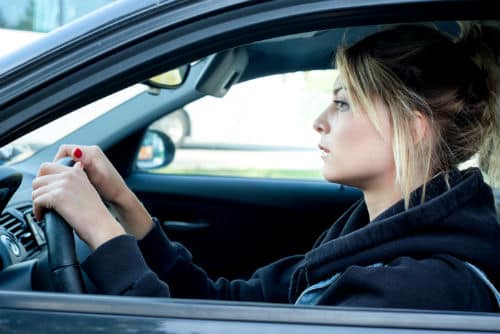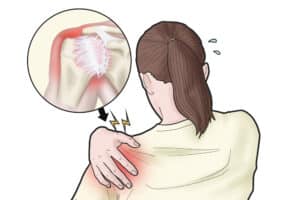Teen Driving
Many of us do not think about driving, in fact, we don’t even think about it at all. It’s just something we do almost every day, something we do on a regular basis, and really, do not give it a second thought. But after doing some research, there is an important pause to take, about teen driving. Here’s how Nichole Morris put it, a researcher from the University of Minnesota: “If you’re going to have an early, untimely death, the most dangerous two years of your life are between 16 and 17, and the reason for that is driving.”
American Statistics
If we look to the statistics regrading teenage driving, The Centers for Disease Control and Prevention in the U.S. states that in the U.S., in 2015, 2,333 teens ages 16–19 were killed and 221,313 were treated in emergency departments for injuries suffered in motor vehicle crashes in 2014. That means that six teens ages 16–19 died every day from motor vehicle injuries. In the U.S., for the age group, deaths from motor vehicle accidents outstrip other causes of death such as suicide, cancer, and other types of accidents.
Also, Charlie Klauer, a research scientist at the Virginia Tech Transportation Institute, said her research suggested the numbers were even higher because many teenage accidents go unreported. These are accidents and incidents that happened, but were never reported to the police.
Canadian Statistics
In Canada, MADD Canada collects information on young people and driving. MADD (which stands for Mothers Against Drunk Driving) started in 1980 in the U.S. and the Canadian branch started in 1989. They are a non-profit organization that seeks to stop drunk driving, and supports those who have been affected by drunk driving.
MADD notes that vehicle accidents continue to be the leading cause of death for teenagers in Canada. Motor vehicle crashes are the top cause of death for people between the ages of 16 to 25 years old, and alcohol or drugs are a factor in 55 percent of these crashes. Young people tend to continue to be over-represented in crash statistics – they only make up about 14 percent of the population, but make up over 33 percent of the crash-related deaths.
Why is this the case?
Why do teenagers have such a high rate of death in vehicle accidents? From the literature, there is not one specific reason; there are several factors that contribute to teens having high death rates from vehicle accidents – both in the U.S. and Canada.
Inexperience
Most teens are inexperienced when it comes to driving. They do not have the years of driving experience that older drivers already have. Many of the older drivers have encountered a variety of different and challenging driving situations. Teens are also more likely than adults to make critical decision errors that lead to serious crashes.
Driving with Passengers
Adding non-family member passengers to the mix increases the risk of a teen having a car accident by 44 percent. And that number doubles with a second passenger. In British Columbia, we have a graduated licencing system, and new drivers with an L and N – they can only drive with one passenger. And the restriction is the same for the L and N drivers.
Driving while Impaired
Any amount of drugs or alcohol will affect your ability to drive. The addition of drugs or alcohol may also hamper driving decisions while on the road. Alcohol affects judgement, hand-eye coordination, the ability to focus, the ability to recognize possibly dangerous driving situations, or the ability to recognize poor road conditions. And young men account for 87 percent of the young fatally injured drinking drivers and 89 percent of the seriously injured drinking drivers. Canadian research shows that numbers are increasing of Canadians who are now driving, after taking drugs.
Seatbelt Use
There seems to be a perception among teenagers that seatbelts are not needed for every vehicle trip. If you compare teens to all other age groups, they are less likely to use a seatbelt. In 2015, only 61% of high school students reported they always wear seat belts when riding with someone else.
Distracted Driving
The use of cellphones while driving continues to be a very big problem. This affects all drivers, not just teens. “Teens’ prevalence for engaging their devices is higher than other age groups,” Dr. Klauer said, “and their risk for being involved in a crash when they do is higher.”
Steve Wallace from the Wallace Driving School on Vancouver Island says, “”Texting … will quickly become in Canada the chief cause of death behind the wheel for teens.” And he’s saying that, even with B.C. having some of the strongest testing regulations in North America, for new drivers.
And it now appears that, for a long time, drinking while driving was the number one killer for teens behind the wheel – but texting while driving is starting to change that statistic – and increase the number of teen deaths due to distracted driving.
Recommendations
If you are a teen driver, or have teen drivers in your household, here are some helpful ideas for driving – driver inexperience (may need help or a skilled passenger with them), limit driving with teen passengers, increasing use of seat belts while driving, teens may be uncomfortable driving at night, making arrangements so teens will not be able to drive while impaired, and for cellphones – putting cellphones away, in the trunk, or turning off all notifications while driving.
References
CBC News. Distracted driving: texting will become largest cause of teen deaths, predicts instructor. March 16, 2016. http://www.cbc.ca/news/canada/british-columbia/distracted-driving-texting-will-become-largest-cause-of-teen-deaths-1.3488719
Centers for Disease Control and Prevention (U.S.) Teen Drivers: Get the Facts. Updated October 16, 2017. https://www.cdc.gov/motorvehiclesafety/teen_drivers/teendrivers_factsheet.html
Insurance Corporation of British Columbia (ICBC). Driver Licensing: New Drivers. https://www.icbc.com/driver-licensing/new-drivers/Pages/default.aspx Copyright 2017.
Mothers Against Drunk Driving (MADD). Youth and Impaired Driving. https://madd.ca/pages/programs/youth-services/statistics-links/ (accessed December 5, 2017).
The New York Times. Teenage Drivers? Be Very Afraid. March 16, 2016. https://www.nytimes.com/2016/03/20/fashion/teenagers-driving-parents.ht








